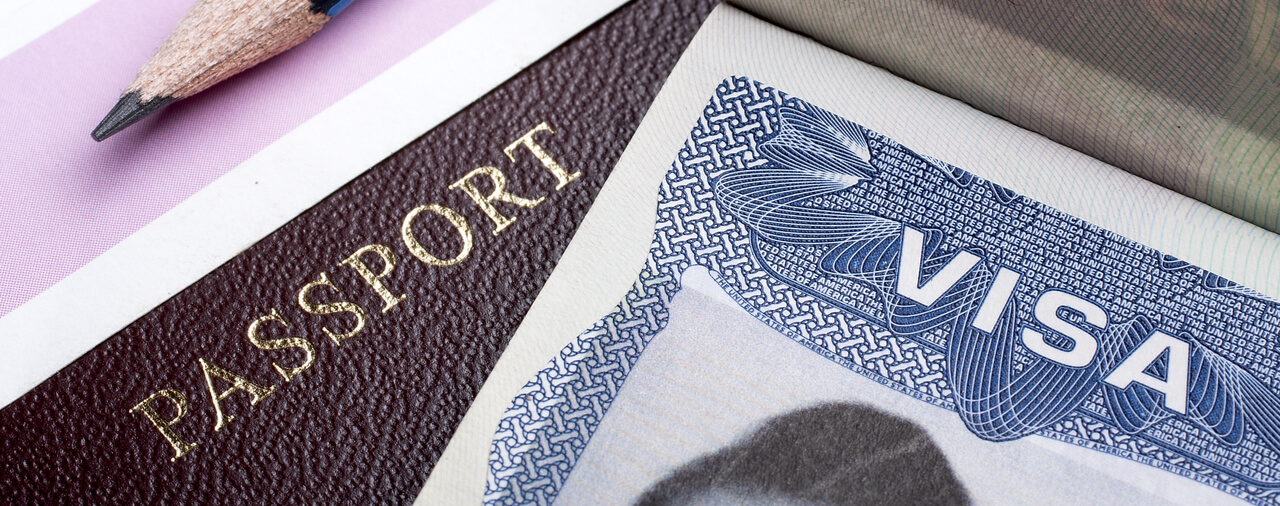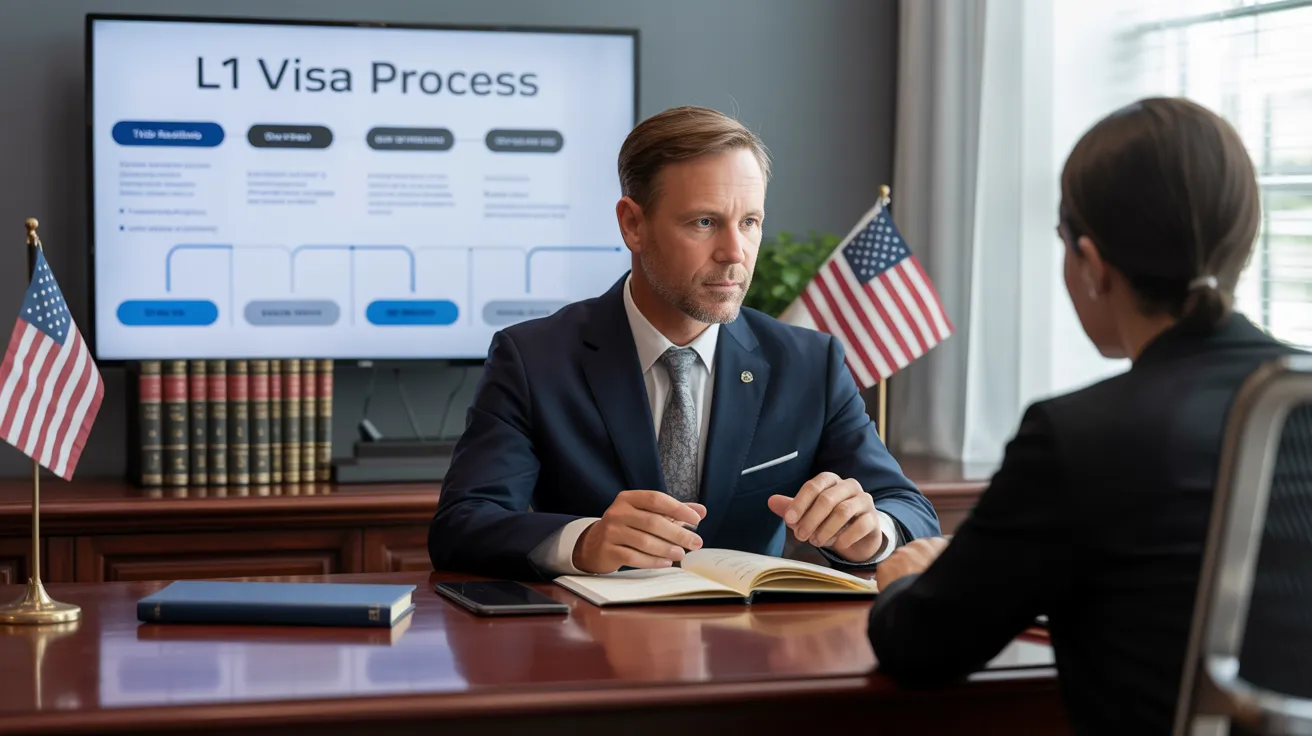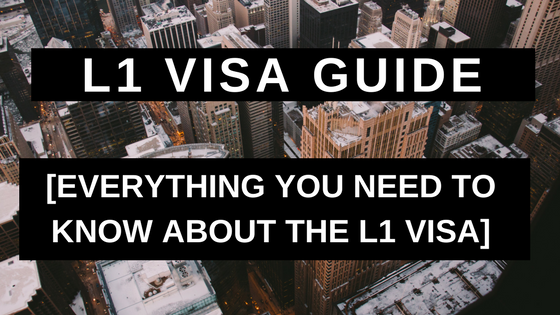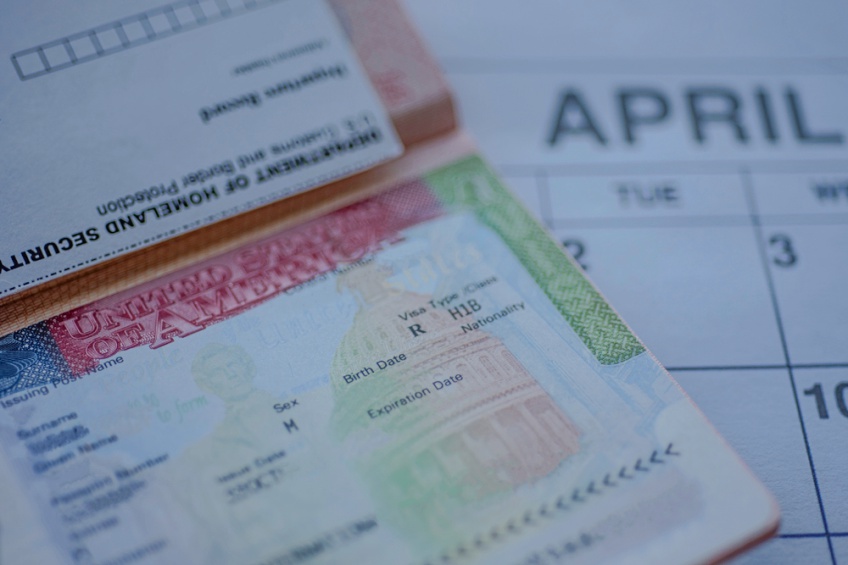L1 Visa Info
Opening Opportunities: A Comprehensive Overview to the L1 Visa Process
The L1 visa procedure presents a crucial pathway for international firms looking for to move key staff members throughout borders. Comprehending the subtleties of eligibility standards, the differences between L-1A and L-1B visas, and the ins and outs of the application procedure can considerably affect an applicant's success. Maneuvering this complex landscape is not without its obstacles, and mindful interest to documents and company sponsorship is important. As we check out the key parts of this process, the methods for overcoming possible challenges will become obvious, disclosing exactly how educated preparation can open up a world of chances.
Recognizing the L1 Visa
Comprehending the L1 visa involves acknowledging its significance as an essential tool for international business looking for to move proficient workers in between worldwide offices. This non-immigrant visa category helps with the activity of execs, managers, and specialized knowledge workers to the United States, therefore making it possible for organizations to preserve functional continuity and harness global ability effectively. The L1 visa is split into two main classifications: L-1A for managers and execs, and L-1B for employees having specialized knowledge.The L1 visa offers a vital function in boosting a firm's competitive side in the worldwide industry - L1 Visa. By enabling business to relocate their key employees, companies can assure that essential tasks are managed by qualified people who are currently familiar with the business's society and operational procedures. This interior transfer system not only promotes understanding sharing but additionally promotes advancement and partnership across borders.Moreover, the L1 visa is commonly favored for its fairly simple application procedure contrasted to various other visa groups, as it enables double intent, permitting holders to seek permanent residency while on a temporary job visa. This attribute makes the L1 visa particularly appealing for both companies and workers, as it streamlines the path for competent professionals to establish long-term residency in the United States
Qualification Criteria
Qualification for the L1 visa depends upon numerous crucial standards that guarantee both the worker and the employer meet specific qualifications. This non-immigrant visa is made for multinational firms to transfer employees from consular services to U.S. counterparts.Firstly, the company has to be a certifying company, that includes a moms and dad firm, branch, affiliate, or subsidiary of an U.S. organization. The business has to have been doing organization for at the very least one year both in the united state and abroad. This assures that the firm has adequate operational security and a reputable presence.Secondly, the staff member should hold a managerial, exec, or specialized understanding position. For L1A visas, the applicant needs to demonstrate supervisory or executive credentials, while L1B visas concentrate on specialized knowledge pertaining to the company's products, services, or procedures. In addition, the employee needs to have functioned for the international entity for at the very least one continuous year within the last 3 years prior to their application.Lastly, the worker's function in the U.S. should straighten with their previous placement, ensuring that their skills and expertise are leveraged for the company's benefit.
Sorts Of L1 Visas
The L1 visa group makes up 2 key types created to help with the transfer of workers within multinational firms: the L1A visa for managers and execs, and the L1B visa for staff members with specialized expertise. Each type offers distinct purposes and has details qualification criteria.The L1A visa is customized for people who hold managerial or executive placements within a company. This visa allows top-level staff members to transfer to an U.S. branch, subsidiary, or associate of the very same company. Applicants for the L1A visa should demonstrate that they have been used in a supervisory or executive capability for at least one continuous year within the previous three years prior to their application. In addition, this visa uses a much longer duration of remain, originally approved for 3 years, with the opportunity of expansions for as much as seven years.In comparison, the L1B visa is intended for professionals with specialized expertise associated to the firm's products, solutions, or processes. To certify, applicants need to verify that their experience is important to the organization which they have functioned for at the very least one continual year within the last 3 years in a duty that required this specialized understanding. The L1B visa is at first granted for 3 years, with extensions readily available for up to 5 years.Both visa types are crucial for companies seeking to boost their global procedures by leveraging competent workers, thereby promoting advancement and performance within the united state market.
Application Process
Guiding through the L1 copyright procedure entails several important steps that must be meticulously complied with to ensure an effective result. The process begins with the U.S. company, that need to first develop eligibility by showing a qualifying partnership with the international entity and validating that the employee meets the particular requirements for the L1 visa group being sought.Once eligibility is verified, the company launches the procedure by filing Type I-129, the Request for a Nonimmigrant Worker, with the United State Citizenship and Migration Services (USCIS) This form should be accompanied by a comprehensive summary of the task duties to be carried out, the organizational framework of both the U.S. and international entities, and the employee's credentials. It's crucial to confirm that all details is precise and total, as omissions or errors can result in delays or denials.Upon authorization of the I-129 petition, the following action entails the worker applying for the L1 visa at a united state embassy or consular office in their home country. This phase calls for the completion of Form DS-160, the Online Nonimmigrant copyright, and arranging an interview. During the meeting, the candidate needs to present proof supporting their certifications and the company's petition.After the visa is given, the worker can go into the USA to operate in the marked role. Generally, mindful preparation and adherence to every step of the application procedure are necessary for an effective L1 visa outcome.
Called for Paperwork

Important Types Required
Navigating the L1 Visa procedure requires cautious interest to the vital types and paperwork necessary for an effective application. The primary type needed is the Kind I-129, Request for a Nonimmigrant Worker, which need to be completed and sent by the U.S. employer. This form describes the details of the work deal and the certifications of the worker looking for the L1 Visa.Alongside Form I-129, the applicant will certainly require to total Form I-539 if going along with family members are additionally using for visas. Additionally, the employer has to give evidence of the qualifying relationship in between the U.S. entity and the foreign entity, typically demanding the submission of corporate files such as short articles of unification or economic statements.Moreover, it is important to include the L Category Supplement to Kind I-129, which defines the sort of L Visa being asked for-- either L-1A for managers and executives or L-1B for workers with specialized expertise. Ultimately, applicants should guarantee that all forms are authorized and dated suitably, as incomplete submissions can result in delays or rejections. Effectively putting together these crucial types lays the foundation for a smoother L1 copyright procedure.

Sustaining Evidence Requirements
Supporting paperwork is vital for a successful L1 copyright, as it substantiates the insurance claims made in the petition. Applicants must provide a series of documents to show qualification for the visa, which is classified into two main types: evidence of the certifying relationship between the united state and international entities and evidence of the applicant's qualifications.To establish the partnership, applicants ought to submit documents such as company organizational charts, monetary declarations, and evidence of possession. These documents validate that the international business has a certifying connection with the U.S. employer, whether as a parent business, subsidiary, branch, or affiliate.For the candidate's qualifications, vital files consist of a detailed L1 Visa work letter from the foreign employer, outlining the applicant's work title, obligations, and duration of employment. Furthermore, academic credentials, such as levels and diplomas, ought to be given to verify the candidate's knowledge in the relevant area.
Employer Sponsorship Papers

Usual Difficulties
Steering the L1 visa process offers a number of usual challenges that applicants should be conscious of. Trick issues commonly consist of stringent documents requirements, possible delays in processing times, and the need for stringent lawful compliance. Recognizing these challenges can aid candidates much better prepare and reduce threats throughout their copyright journey.
Documents Requirements
The L1 copyright process often provides considerable challenges associated with documentation requirements. Applicants must supply extensive paperwork to develop qualification, which can cause complication and potential hold-ups. Trick documents consist of evidence of a certifying partnership between the U.S. and foreign employer, proof of the candidate's work background, and comprehensive information about the work duty in the U.S.One common challenge is gathering enough evidence to show the nature of the certifying partnership. Business typically have a hard time to existing clear business charts or monetary declarations that illustrate the link in between the entities. In addition, guaranteeing that letters of support from employers precisely mirror the candidate's work responsibilities and certifications is essential, as unclear descriptions can cause denials.Another problem occurs from the demand for comprehensive job summaries that line up with the L1 visa classifications. Applicants must express not just their current function yet likewise their managerial or specialized understanding obligations clearly. This necessitates a complete understanding of both the candidate's setting and the regulative language used in L1 applications.
Processing Dead Time
Experiencing delays in processing times is a common difficulty faced by L1 visa candidates, often causing aggravation and unpredictability. Numerous variables add to these delays, consisting of high application volumes, enhanced scrutiny of applications, and management backlogs within the united state Citizenship and Immigration Provider (USCIS) Applicants might locate that handling times can vary substantially depending upon the service facility managing their application, as each center has its very own workload and effectiveness levels. In addition, the intricacy of the candidate's instance, such as the requirement for extensive documentation or information, can better extend wait times.In some instances, concerns associated to the applicant's current migration condition or previous visa background may additionally lead to extra hold-ups, as USCIS might call for additional review or information. It is vital for candidates to stay positive throughout this period, preserving open interaction with their employers and lawful agents to resolve any prospective issues promptly.Understanding these processing time difficulties can aid L1 visa applicants get ready for feasible hold-ups and reduce the effect on their shift and occupation plans. Perseverance and persistance are important virtues in maneuvering this complex procedure.
Lawful Compliance Issues
Lots of L1 visa candidates experience legal compliance issues that can complicate their journey towards getting the visa. Understanding and adhering to the specific regulations set by the united state Citizenship and Immigration Solutions (USCIS) is essential. Usual difficulties consist of demonstrating the qualifying relationship in between the international and united state employers, as well as proving that the applicant possesses the requisite specific understanding or managerial capacity.Additionally, applicants have to provide complete paperwork detailing their work duties, corporate framework, and monetary practicality of the united state entity. Poor or incorrect documentation can result in delays or perhaps rejections. Companies must additionally ensure that they abide with labor legislations, including wage and working condition criteria, which can impact visa eligibility.Another common concern includes maintaining compliance with the terms of the visa once granted. Adjustments in work condition, job obligations, or business structure can demand modifications to the visa, which otherwise addressed quickly can lead to lawful issues. As an outcome, remaining notified concerning compliance demands and seeking legal counsel when essential is necessary to browse the complexities of the L1 visa process efficiently.
Tips for Success
Success in the L1 copyright procedure often depends upon precise prep work and focus to detail. To improve your opportunities of approval, start by completely recognizing the qualification needs for both the L1A and L1B visa classifications. Review whether your position at the business certifies as managerial, executive, or specialized expertise, as this categorization especially impacts your application.Next, collect substantial documentation that confirms your claims. This consists of business graphes, thorough work descriptions, and evidence of the business's operational structure. Clear and succinct evidence of the qualifying connection in between the united state entity and the foreign entity is vital. Verify that all documents are arranged logically and presented in a professional way, as this mirrors your dedication and severity regarding the application.Engage the solutions of a skilled immigration attorney who specializes in L1 visas. Their competence can prove invaluable, directing you with complex guidelines and guaranteeing that all documentation follows existing legislations. In addition, plan for the meeting by exercising solution to common concerns and preparing to review your duty and payments to the firm comprehensive.
Frequently Asked Questions
Can Family Members Come With the L1 Visa Holder?
Yes, relative of L1 visa owners, including spouses and unmarried children under 21, can come with the primary visa owner. They might additionally get L2 visas, which permit them to stay in the USA.
Exactly How Lengthy Can I Remain On an L1 Visa?
The L1 visa permits first remains of approximately three years, with the opportunity of extension. L1A visa owners might stay for an optimum of seven years, while L1B visa owners can stay for five years.
Can L1 Visa Owners Look For a Permit?
Yes, L1 visa holders can look for a permit. L1 Visa. They might go after permanent residency via employment-based classifications, normally needing sponsorship from their company, offered they fulfill the required credentials and documentation needs
What Happens if My L1 copyright Is Refuted?
If your L1 copyright is denied, you may receive a notification detailing the factors for denial. You can seek to appeal the decision, reapply, or discover alternate visa options based upon your scenarios.
Are There Any Kind Of Travel Restrictions With an L1 Visa?
An L1 visa usually enables global travel; however, re-entry to the U. L1 Visa Requirements.S. rests upon keeping valid condition. Vacationers should ensure conformity with visa conditions to prevent issues upon return
Conclusion
